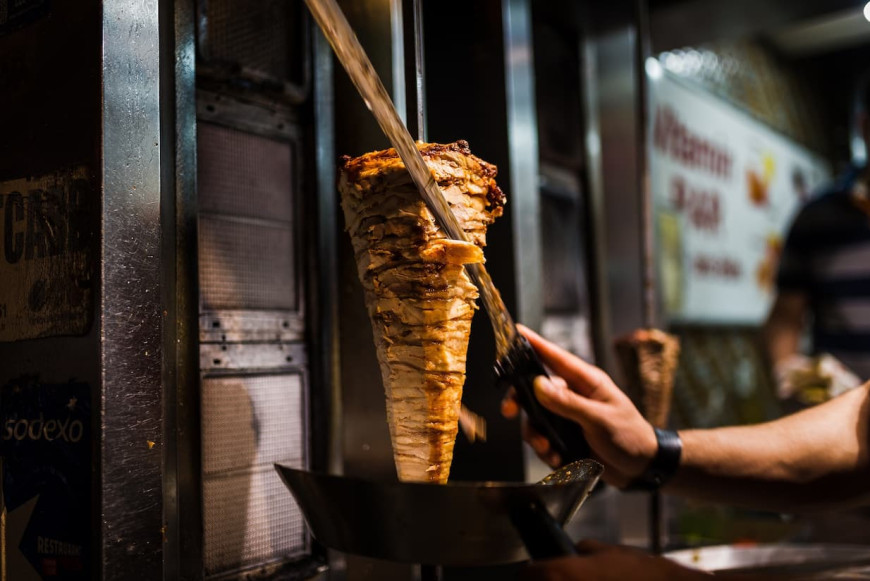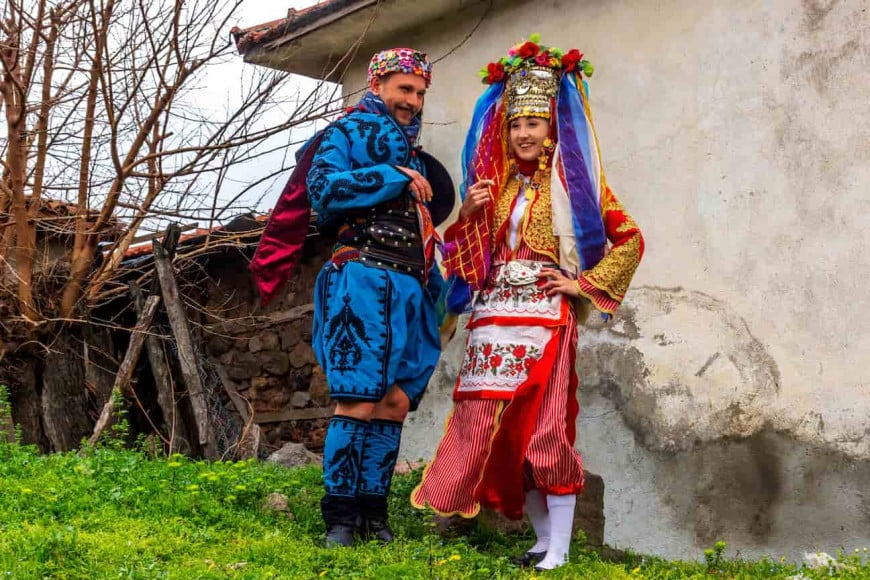Turkey is a land of rich cultural heritage, and one of the most fascinating aspects of this heritage is its Turkish traditions. These traditions offer a window into the country's history and its way of life, and they are a testament to the diversity and complexity of Turkish culture. In this article, we will explore seven fascinating Turkish traditions that you need to know about.
About Turkish Traditions
Turkey, as a country that has hosted many civilizations throughout its history, has a rich cultural heritage. Turkish traditions have been passed down from generation to generation over centuries and are still preserved today. Turkey, which has different traditions in many areas such as cuisine, music, dance, clothing style, and handicrafts, attracts attention with this richness.
Turkish traditions hold an important place in the lives of the Turkish people and are still kept alive. Examples of these traditions include the red ribbons worn at weddings, visits to relatives during holidays, iftar dinners during the month of Ramadan, and New Year's celebrations. Turkish culture and traditions have a rich and colorful world and are of interest worldwide.

Turkish Food Traditions
Turkish cuisine is renowned for its rich variety and unique flavors. Turkish food traditions date back centuries and are influenced by the country's geographical location and history. Turkey's cuisine is a reflection of its diverse cultural heritage, which includes influences from the Ottoman Empire, Central Asia, and the Middle East.
One of the most popular Turkish dishes is the döner kebab, which is made from marinated meat (usually lamb or chicken) that is roasted on a vertical spit and then thinly sliced. Döner kebab is typically served in a wrap with vegetables and sauces.
Meze, a selection of small dishes, is a fundamental part of Turkish food culture. It is usually served as a starter to a meal, and often includes a variety of cold and hot dishes such as stuffed grape leaves, grilled eggplant, hummus, and cacık (a yogurt-based dip). Meze is typically accompanied by rakı, a traditional Turkish anise-flavored spirit, making it a social and interactive part of the meal.
Another essential aspect of Turkish food traditions is the use of spices and herbs. Turkish dishes commonly feature spices such as cumin, coriander, and sumac, which add depth and complexity to the flavor profile. Herbs such as mint, parsley, and dill are also widely used in Turkish cooking, both as a seasoning and as a garnish. The use of these spices and herbs, along with the cooking techniques employed, give Turkish cuisine its distinct taste and aroma.
Turkish Wedding Traditions
Weddings are a big deal in Turkish culture, and they are typically multi-day affairs with lots of food, music, and dancing. One of the most important traditions is the henna night, which takes place a few days before the wedding. During the henna night, the bride's female relatives and friends gather to decorate her hands and feet with henna, which is believed to bring good luck and fertility. The bride wears a red dress and a veil on henna night, and the guests sing traditional songs and dance.
Another important tradition is the "bridal procession," which takes place on the day of the wedding. The groom and his family arrive at the bride's house to "ask for her hand" and then escort her to the wedding venue. Along the way, they dance and sing, and people throw coins at them for good luck.
Turkish Music Traditions
Music has always played an integral role in Turkish culture, with a rich history that spans centuries. Turkish music traditions are characterized by a unique blend of sounds and instruments, influenced by the country's geography and diverse cultural heritage. From traditional folk music to contemporary pop, Turkish music has a lot to offer.
One of the most distinctive features of Turkish music traditions is the use of stringed instruments. The oud, a short-necked lute, is one of the oldest and most popular instruments in Turkish music.
Other traditional stringed instruments include the saz, a long-necked lute, and the kanun, a zither-like instrument. These instruments are often used in ensemble performances, adding a melodic and rhythmic element to the music.
Another important aspect of Turkish music traditions is the use of rhythmic patterns. Turkish music uses a complex system of rhythms known as usul, which consists of cycles of beats and rests. This rhythmic system is the foundation of Turkish music and is used in a variety of genres, including classical Ottoman music, Turkish folk music, and modern pop music.
Turkish Art Traditions
Turkish art traditions are an integral part of the country's cultural heritage, reflecting its rich history and diverse cultural influences. Turkish art encompasses a wide range of forms, including calligraphy, ceramics, weaving, and painting. These art forms have been practiced for centuries and continue to be celebrated and appreciated today. One of the most significant art forms in Turkish art traditions is calligraphy. Calligraphy is the art of beautiful writing and has been an essential part of Turkish culture since the Ottoman Empire.
Turkish calligraphy uses Arabic script to create intricate and decorative patterns, often used to adorn buildings, manuscripts, and textiles.
Another important art form is ceramics, which are often decorated with intricate designs and patterns, using a range of colors and techniques. These ceramics are used in daily life, from household items such as plates and cups to decorative pieces used in festivals and celebrations.
Overall, Turkish art traditions are a testament to the country's rich cultural heritage and the diverse influences that have shaped it over the centuries. Turkish art forms continue to be celebrated and appreciated today, reflecting the enduring spirit and creativity of the Turkish people.

Turkish Clothing Traditions
Turkish clothing traditions have been shaped by the country's rich history and diverse cultural influences. Clothing in Turkey varies by region and reflects the customs, traditions, and beliefs of the people who wear them. From traditional garments such as the kaftan and fez to modern fashion trends, Turkish clothing traditions have a lot to offer.
One of the most iconic pieces of clothing in Turkish clothing traditions is the kaftan. The kaftan is a long, loose robe that has been worn in Turkey for centuries. The design and style of the kaftan have evolved over time, but it remains an important part of Turkish cultural heritage. Another iconic piece of clothing is the fez, a brimless hat that was traditionally worn by men in Turkey. While the fez is not as commonly worn today, it remains a symbol of Turkish identity and tradition.
Turkish Dance Traditions
Turkish dance is an important part of the country's culture, and there are many different styles of dance to enjoy. One of the most popular styles is the "halay," which is a group dance that is performed at weddings and other celebrations.
The halay is a lively and energetic dance that is typically accompanied by traditional music. It involves a series of steps and movements that are performed in a circle, with each person holding hands with their neighbors.
Another popular dance style is the "belly dance," which is also known as "Oryantal dansı." It is a sensual and graceful dance that originated in the Middle East, and it is now popular all over the world. The belly dance involves fluid and undulating movements of the hips and torso, and it is often accompanied by traditional Turkish music.
Turkish Festivals and Celebrations
Turkish people love to celebrate, and there are many festivals and celebrations throughout the year. One of the most important is "Eid al-Fitr," which marks the end of Ramadan. During Eid al-Fitr, people gather with their families and friends to enjoy special meals and exchange gifts. It is a time of joy and celebration, and it is an important part of Turkish culture. Another important festival is "Hıdırellez," which marks the beginning of spring. It is a time of renewal and hope, and people celebrate by dancing, singing, and lighting bonfires.
In Summary Turkish Culture and Traditions
Tolerance Homes
We are always ready to answer all your questions, please reach out via Whatsapp +90 (532) 158 42 44
If you want to emigrate or buy an apartment in Turkey or own a property in turkey and enjoy life by the sea, message our specialists who will find the best options for your budget.
Also, subscribe to our YouTube channel and Instagram page to receive information from the professionals!
An additional channel to connect with us: Telegram

